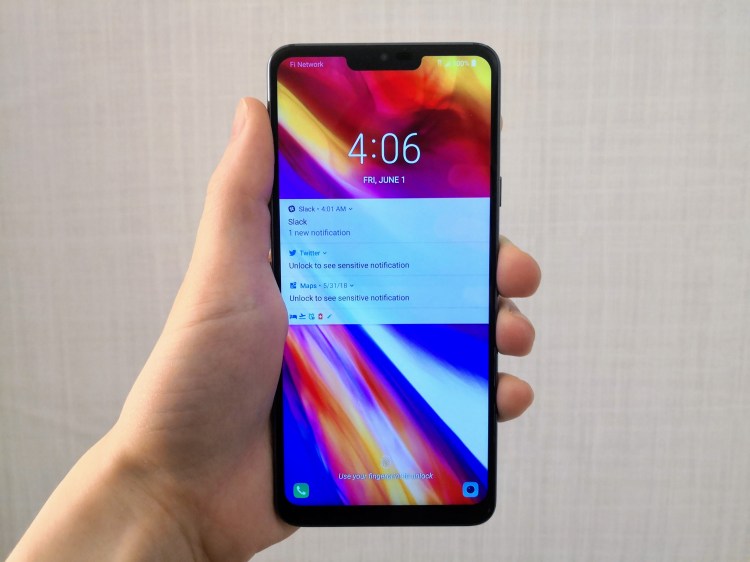LG’s smartphone division needs a hit, and it put most of its eggs in one basket with the LG G7 ThinQ, which goes on sale today starting at $750 from Verizon, T-Mobile, and Sprint.
The LG G7 is the successor to last year’s LG G6 and the second smartphone to bear LG’s “ThinQ” branding, which was previously reserved for the South Korean company’s lineup of smart speakers, connected appliances, and autonomous vacuum cleaners. But just how smart is the G7 ThinQ, really?
Flagship specifications
Let’s get the obvious stuff out of the way first: The G7 ThinQ is a veritable powerhouse of a smartphone. The Snapdragon 845, Qualcomm’s premium system-on-chip of the moment, sits at its core, alongside 4GB of RAM and 64GB of storage. It has a 3,000mAh battery that lasts a solid 8-10 hours in my testing and charges to 50 percent in just 15 minutes, thanks to Qualcomm’s Quick Charge 4.0+ tech. There is a USB Type-C connector and a 3.5mm headphone jack onboard, and it has a good, if not great, dual rear camera setup consisting of a 16MP camera with a f/1.6 aperture and a secondary 16MP camera with a f/1.9 aperture and wide angle lens.
It is also stylish, if a little muted compared to the Samsung Galaxy S9 and its curved screen or the titanium Essential Phone. The G7 ThinQ’s glossy, all-glass surface is a bit of a fingerprint magnet, but it shines in the light like a freshly waxed car. There is a hollowness to the back cover that is a little disconcerting — if you tap the glass beneath the rear camera, it feels like plastic — but it is deceptively durable, with certifications for both IP68 (it can survive for up to 30 minutes in a 5-foot pool of water) and MIL-STD 810G (which means it can be safely dropped from a height of a few feet).
AI first
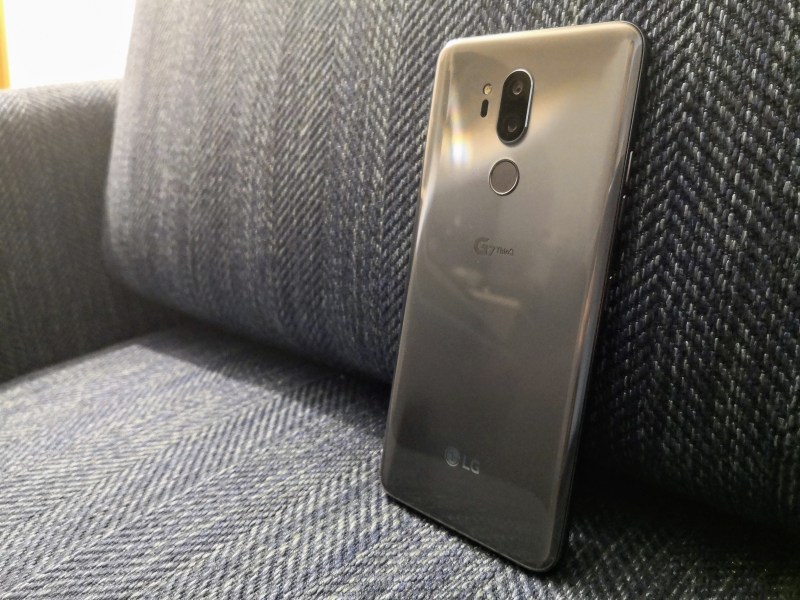
At Mobile World Congress 2018 in March, LG took the wraps off AI Pack, a suite of smartphone-oriented machine learning features.
Of the apps bundled with AI Pack, AI Cam is the most impressive of the bunch — in theory. It automatically switches between 19 different color and contrast filters — including Person, Flower, Pet, Food, Sunset, Landscape, City, Animal, Beverage, and Snow, to name a few. The selection depends on ambient lighting conditions and objects in the frame. It will even recommend optimal exposure and saturation settings, enable or disable high dynamic range (HDR), and switch between shooting modes like wide-angle mode (courtesy of the G7’s secondary camera), when appropriate.
It is a promising list of features, and the G7 executes some of them pretty consistently. In my testing, AI Cam had no trouble recognizing people and automatically flipping into Person mode (which highlights skin tone) when it spotted one or more faces in frame. That was equally true of skyscrapers: It switched to City mode when the sunny skyline of New York, my home city, came into focus. And although AI Cam occasionally stuttered and lagged in the dim lighting of my apartment’s guest room, it even correctly switched to the G7’s low-light shooting mode, Bright Mode, every time I turned off the nightstand lamp. (If anything, the G7 engages Bright Mode a bit too aggressively; it is unfortunate there isn’t a threshold slider.)
I didn’t have nearly as much luck with LG G7’s QTag feature, a word cloud that flutters around objects AI Cam vaguely recognizes, like food, clothing, and landmarks. LG worked with software developer EyeEM to train its AI on more than 100 million images and claims it can detect 1,162 different objects.
But if my testing is any indication, those algorithms could use a bit more work.
For example, AI Cam was fairly certain that my clunky old Acer laptop was a “musical instrument,” a “poodle,” or an “infinity pool.” It thought an aluminum Pepsi can was “ham,” a “water tank,” or “parking.” And it seemed convinced that my backpack was a “bath” or “cauliflower.”
Those aren’t the only objects that confused AI Cam. It labeled a squeeze container of Dove Men hair gel “handwriting,” “office,” and “document” (the fine print on the front of it seemed to confuse it). And ironically, it couldn’t recognize its own kin: an LG V10. (In fairness, it caught my reflection in the V10’s screen and switched the camera setting to People mode.)
AI Cam’s less-than-stellar showing got me thinking: Is Google Lens, the other object-detecting AI that ships on the G7, any better? Only by a hair. It picked out the Acer logo from the aforementioned laptop (and the VentureBeat insignia from an open Chrome tab) and got a positive ID on the hair gel. But it is far from perfect — in my testing, the AI struggled to recognize the Pepsi can and backpack.
Of course, it is worth mentioning that unlike AI Cam, Google Lens can scan barcodes and QR codes, add events to calendars, and scan business codes. Still, it is safe to say that computer vision has a ways to go.
Slightly more functional than AI Cam is the G7 ThinQ’s dedicated Google Assistant Key, a one-tap physical shortcut to the Google Assistant. A single click launches the Assistant, while a double click and press-and-hold gesture pulls up Google Lens and the Assistant’s voice recognition feature, respectively. Right now, the button can’t be reprogrammed or customized, but LG says it is willing to make changes based on customer feedback.
It works as advertised, though I rarely used it. For a right-hander like me, there is no easy way to get to the Google Assistant Key — it is too far beneath the volume rocker to reach comfortably with an index finger. Sure, I could shimmy my hand down the LG G7’s slippery glass back cover, or recruit the help of a second hand, but I found it much easier to launch the Google Assistant by long-pressing the G7 ThinQ’s home button. Not only was it an easier maneuver to execute one-handed, with my thumb, but it precluded any possibility that I’d mistake the Google Assistant Key for the volume down button, which happened more often than I care to admit.
Voice commands
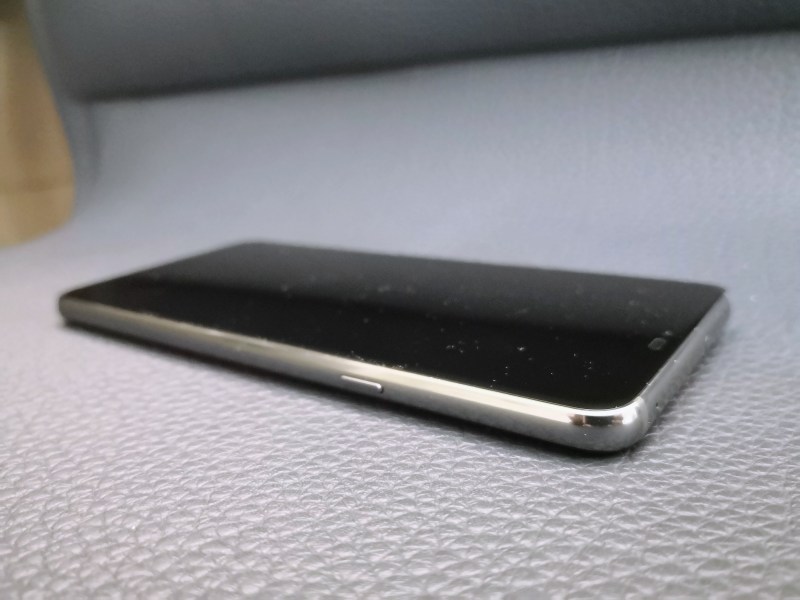
Some of the G7’s computer vision features are a wash, it is true. But its voice recognition features are genuinely useful.
I especially liked the beam-forming Super Far Field microphones, which can pick up voice commands as far as 17 feet away — 3 times the range of most phones, LG says. Alas, I didn’t have a tape measure handy when I put it through its paces, so I can’t speak to the veracity of the company’s claim. But I can say that the G7 had no trouble recognizing my voice just as well as my Google Home, which sits on a nightstand across the hall from my apartment’s living room. It is a good 10-foot distance, give or take.
Voice recognition on the G7 will become more useful over time, LG tells me. The company worked closely with Google on more than 20 custom commands for ThinQ devices, like “OK Google, take a picture on a wide angle” and “OK Google, open camera on Cine Video,” that’ll go live in the coming weeks. Personally, I’m not convinced of the usefulness of those voice commands, especially esoteric ones like “OK Google, take a romantic Cine Video.” But I’m willing to give LG the benefit of the doubt. If anything, they should make the G7 easier to use one-handed.
Sizing up the competition
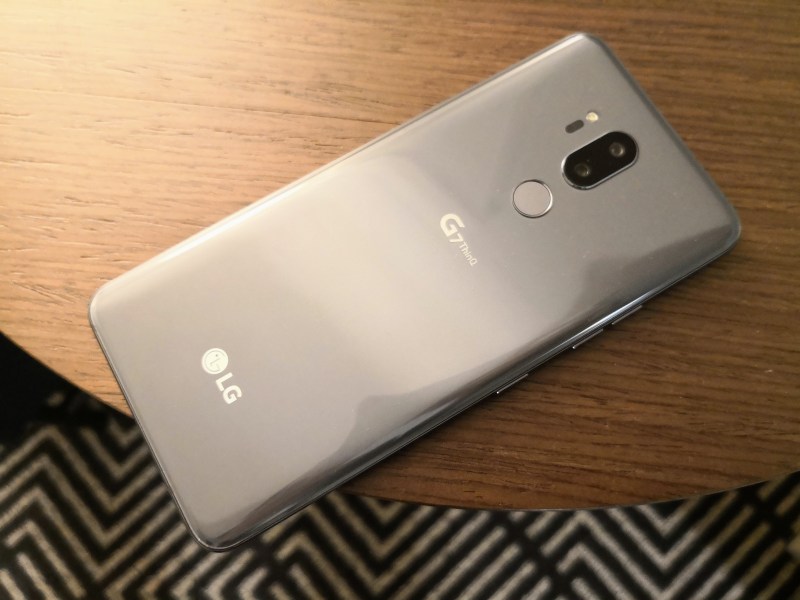
It is worth noting that LG isn’t the first smartphone original equipment manufacturer (OEM) to highlight its AI prowess.
AI is embedded in lots of the Google Pixel 2 and Pixel 2 XL’s software, but nowhere are its benefits more apparent than in the camera. Neural networks power Google’s high dynamic range plus (HDR+) feature, which combines a burst shot of 10 photos into a composite with enhanced brightness and contrast, and Portrait Mode, which analyzes a composite of 10 images to isolate people in photos and creates a depth map from the combined imaging data.
On newer smartphones from Huawei, the Neural Processing Unit (NPU) in the company’s Kirin mobile chipset — in tandem with its HiAI heterogeneous computing architecture and libraries — pre-allocates system resources to apps users are most likely to launch and powers Huawei’s Master AI camera app, which uses AI to power optical image stabilization and automatically optimize settings based on lighting conditions, the color of subjects in the frame, and other factors.
Finally, I’d be remiss if I didn’t mention that LG’s own AI Pack and all of its associated features aren’t exclusive to the G7 ThinQ. LG brought AI Cam to the V30 in April and has said publicly that it’ll continue to update older devices with new AI-powered features as long as the hardware allows.
That begs the question: If all of the G7 ThinQ’s headlining AI features and more are available elsewhere, is it really worth buying?
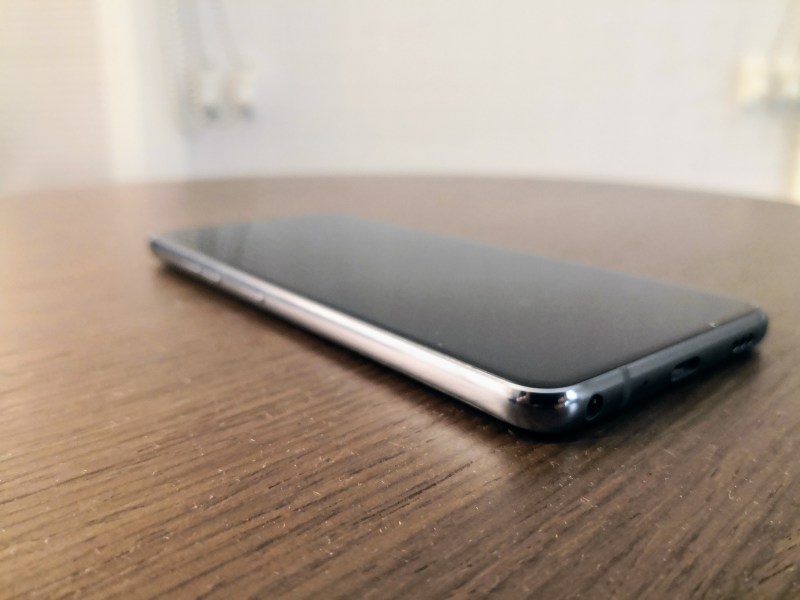
That depends. I like the Quad HD+ (3120×1440 pixels) 19:5:9 FullVision screen, which LG claims is the brightest on the market. With the G7’s special Boost mode enabled, it can hit 1,000 nits for up to three minutes at a time (to prevent overheating). It is LCD as opposed to OLED, so it doesn’t quite achieve the deep blacks and high saturation of phones like the Samsung Galaxy S9 and OnePlus 6. And like the iPhone X, it has a notched cutout near the top of the display that won’t float everyone’s boat. (LG has a clever software feature that lets you “hide” the notch by coloring either side of the Android notification shade black to match its color.) But in my testing, I was impressed with its viewing angles and sheer vibrancy — especially in apps with high dynamic range (HDR) content like YouTube, Netflix, and Amazon Video, which the G7 supports.
I also liked the Quad DAC, a 32-bit digital to analog converter that taps four digital-to-analog converters, proprietary algorithms, and an amplifier to boost the bass, reduce noise and distortion, and widen the dynamic range of audio piped through the G7’s 3.5mm headphone jack. In my testing, it made a subtle but noticeable difference in music, especially in synth-pop tracks like Chvrches’ “The Mother We Share” and Miike Snow’s “Bavarian #1.” Tracks sounded richer and fuller than with the Quad DAC disabled.
For an even more immersive experience, there is DTS:X 3D, a virtual surround sound profile that mimics a surround sound setup. I didn’t find it particularly convincing, but it did appear to widen the soundstage in some tracks. Your mileage may vary.
I wasn’t quite as impressed with the G7 ThinQ’s Boombox Speaker, which uses the inner space between the G7 rear cover as a resonance chamber to boost bass and volume levels. It certainly boosted the phone’s volume, but at the cost of crispness and clarity. At maximum volume, highs clipped and bass sounded muddled and indistinct.
Less than the sum of its parts
I can’t overstate this enough: the LG G7 ThinQ isn’t a bad phone. In fact, it is a pretty good one. Your $750 nets you speedy hardware, a polished design, and great sound. Trouble is, none of those features are particularly innovative.
Plenty of phones boast great cameras, like the Google Pixel 2, OnePlus 6, Huawei P20, and Galaxy S9, and plenty more have speedy processors and gorgeous screens. Take away the Boombox Speaker and Quad DAC, and there’s little left that distinguishes the G7 from the rest of the pack.
LG pitched the G7 ThinQ’s AI as its differentiating feature. But it clearly isn’t ready for prime time. Until things change, I’d recommend saving a few benjamins and opting for one of the dozens of smartphones that deliver on their promises.
